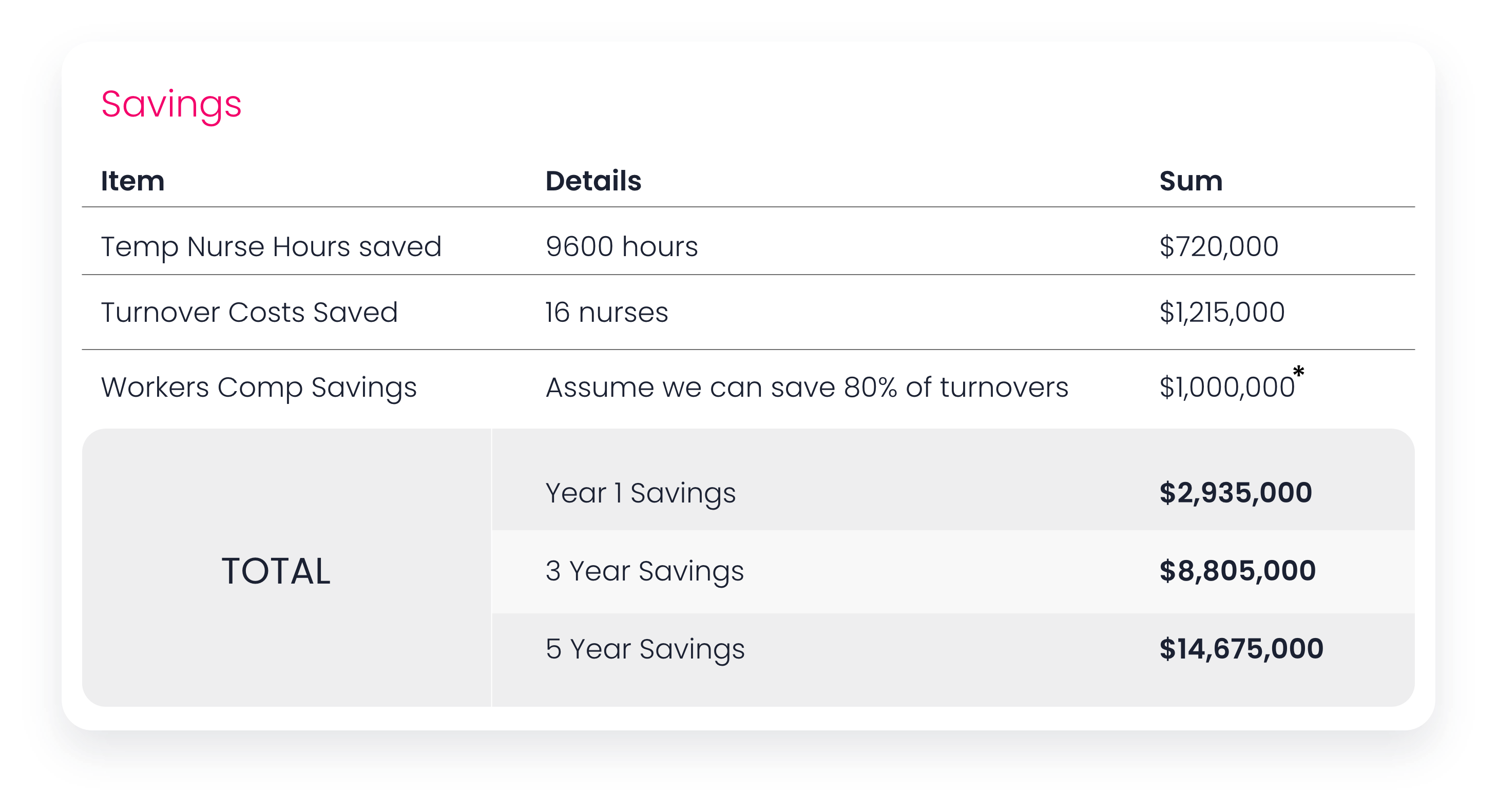It’s undeniable – failing to protect your staff is costing your healthcare enterprise millions of dollars each year. Providing a safe workplace is critical—not only for the well-being of your clinical staff but also for your financial health. By defining solutions for hospital staff safety, we can protect our most valuable resource (clinical staff) and improve patient care while reducing costs.
In this article, we provide information that will enable you to know how to analyze the ROI for implementing technologically advanced safety measures, as revealed through a live, now on-demand webinar with Mike Cummings, our Chief Security Advisor, and other practical examples.
Reducing Workplace Violence (WPV)
1 out of 4 nurses in America suffers from physical violence at their workplace, according to The American Hospital Association. Not only is this fact disturbing and undoubtedly affects the well-being and welfare of nursing staff, but there are also significant financial implications associated with the issue. But now, there’s a better way, with proven solutions built on RTLS and wearable technologies.
- Medical Costs and Legal Fees: Decreasing the number of WPV incidents can lead to significant savings with reduced costs and expenses associated with backfils or treatment for injured staff as well as workers compensation or legal fees.
- Insurance Premiums: Improved safety records may translate into lower insurance premiums, guaranteeing a long-term gain for the health system.
- Turnover Rates: A safer working environment can decrease employee turnover, reducing costs associated with recruitment, onboarding, and training.
Improving Staff Retention
High turnover rates in healthcare are costly. Safety measures like wearable smart badges with discreet panic or assist buttons for sending instant alerts or calls for help can boost job satisfaction and retention. Part of building a safe workplace is making sure staff feel seen, valued, and protected.
- Recruitment and Training: Decreasing turnover rates can save hospitals significant and measurable amounts of expenses per employee. For example, the average cost to replace a nurse can be as high as $50,000 to $75,000. And talented, experienced nurses are increasingly in short supply as more and more are leaving the profession.
- Operational Efficiency: Consistently maintaining the necessary staffing levels ensures smooth and effective operations as well as higher quality patient care, indirectly supporting financial stability.
Enhancing Operational Efficiency
When staff feel safe and supported, their efficiency and productivity improve, positively affecting the entire organization.
- Productivity Gains: Safe environments foster higher productivity. Employees who feel secure are more focused and engaged in their work.
- Reduction in Absenteeism: Safety measures can reduce workplace injuries and illnesses, leading to lower absenteeism rates.
Case Study: Hospital ABC
Consider a hypothetical example with “Hospital ABC.”
Assumptions
- Patient beds: 200
- Nurses: 300 (2:3 bed-to-nurse ratio)
- Avg. incidents per year: 60 (20% of nurses)
- Nurse out-of-commission hours: 9600 ($50/hr)
- Temp nurse hours: 9600 ($75/hr)
- Nurse turnover per year: 67.5 (22.5%)
- Turnover due to safety concerns: 20 (30%)
- Average cost of turnover per nurse: $75,000
Savings 
*The value for Workers’ Compensation Savings ($1,000,000) is an estimated figure and should be treated as an assumption. Actual workers’ compensation costs can vary significantly based on numerous factors, including specific hospital policies, insurance coverage, and regional differences. As such, this figure should be used for illustrative purposes only and not as a definitive cost savings calculation.
Costs

ROI
- ROI: 20-25x
- BreakEven Point: 2-6 months
In conclusion, every dollar spent on enhancing staff safety at Hospital ABC generates from 20 to 25 times more revenue. Investing in modern solutions improves the well-being of healthcare workers and generates huge savings.
These savings don’t just improve the bottom line; they create a safer, more supportive work environment, boosting staff’s morale and well-being. Plus, these operational improvements across the enterprise can also deliver higher quality care and consequently improve patient outcomes.
The ROI is clear: improved staff retention, reduced workplace violence, and enhanced operational efficiency add to a healthier bottom line.
At Kontakt.io, we specialize in creating flexible and impactful solutions tailored specifically for healthcare. Are you curious about the potential ROI for your medical facility? Contact us at hello@kontakt.io to schedule a consultation. Let’s enhance safety and efficiency in healthcare together.


